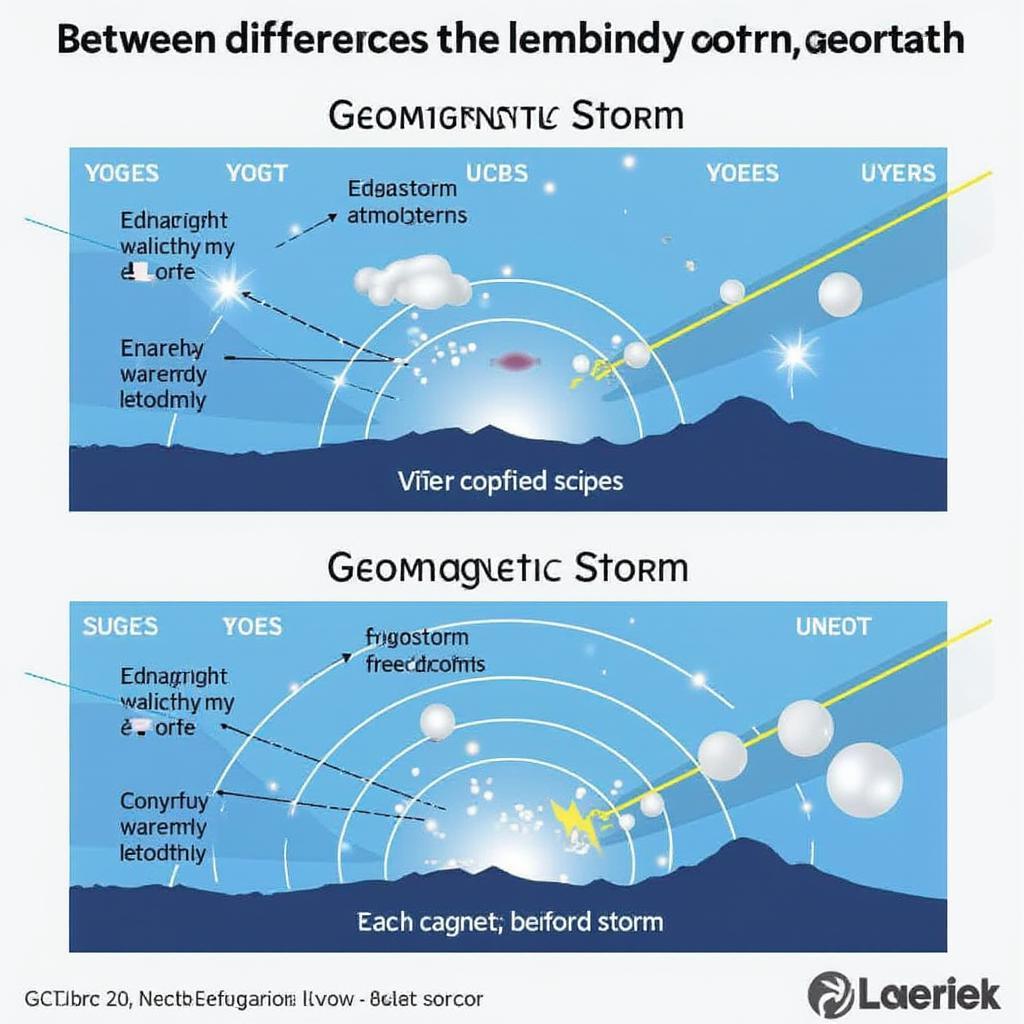Devastating Geostorm: Understanding the Science, Impacts, and Preparedness

A Geostorm, a disturbance in Earth’s magnetosphere, can disrupt our technology-dependent world. Triggered by solar flares and coronal mass ejections from the sun, these events unleash a torrent of charged particles that interact with our planet’s magnetic field, potentially causing widespread disruption to power grids, satellite communications, and navigation systems. Understanding the science behind geostorms, their potential impacts, and how we can prepare for them is crucial for mitigating their devastating effects.
What Causes a Geostorm? The Sun’s Fury Unleashed
Geostorms originate from intense solar activity, primarily solar flares and coronal mass ejections (CMEs). Solar flares are sudden, intense bursts of radiation from the sun’s surface, while CMEs are large expulsions of plasma and magnetic field from the sun’s corona. When these energized particles reach Earth, they collide with our planet’s magnetosphere, a protective shield created by Earth’s magnetic field. This interaction compresses and distorts the magnetosphere, leading to a geomagnetic storm. The severity of a geostorm is measured using various scales, with the most common being the G-scale, ranging from G1 (minor) to G5 (extreme).
The Impacts of a Geostorm: A Cascade of Disruptions
The consequences of a severe geostorm can be far-reaching and significantly impact our modern society. One of the most significant threats is to power grids. The influx of charged particles can induce powerful electric currents in long conductors, such as power lines, potentially overloading transformers and causing widespread blackouts. Satellite communications are also vulnerable, as the intense radiation can damage satellite electronics and disrupt signals. Navigation systems, including GPS, rely on precise timing signals from satellites, and geostorms can interfere with these signals, leading to inaccuracies and outages.

Predicting and Preparing for a Geostorm: Mitigating the Risks
While we cannot prevent geostorms, we can improve our ability to predict and prepare for them. Space weather forecasting agencies, such as the National Oceanic and Atmospheric Administration (NOAA) Space Weather Prediction Center, monitor solar activity and issue alerts when a geostorm is likely. These alerts provide crucial time for power grid operators to take preventative measures, such as adjusting voltage levels and isolating vulnerable sections of the grid. Satellite operators can also take steps to protect their assets, such as reorienting satellites to minimize exposure to radiation.
How Can Individuals Prepare for a Geostorm?
Individuals can also take steps to prepare for a geostorm. Having an emergency kit with essential supplies, such as food, water, and a first-aid kit, is crucial. A battery-powered radio can provide information in case of power outages. Understanding the potential risks and having a plan in place can help individuals and communities better cope with the disruptions caused by a geostorm.
“Preparing for a geostorm is not just about protecting infrastructure, it’s about ensuring the safety and well-being of communities,” states Dr. Emily Carter, a leading space weather researcher at the National Space Science Center. “Individual preparedness is as crucial as national-level strategies.”
Geostorm vs. Geomagnetic Storm: Is There a Difference?
While often used interchangeably, the terms “geostorm” and “geomagnetic storm” have slightly different meanings. A geostorm encompasses a broader range of space weather phenomena, including disturbances in the Earth’s ionosphere and thermosphere. A geomagnetic storm specifically refers to the disturbances in the Earth’s magnetosphere caused by the interaction with solar wind. However, in general usage, both terms often refer to the same event: a disturbance in Earth’s magnetic environment triggered by solar activity. Dr. Albert Reynolds, a geophysicist at the University of Alaska Fairbanks, clarifies: “Think of ‘geostorm’ as the umbrella term, and ‘geomagnetic storm’ as the specific type of storm affecting Earth’s magnetic field.”

The Carrington Event: A Historical Perspective on Geostorm Impact
The Carrington Event of 1859 serves as a stark reminder of the potential power of geostorms. This historic event, the largest geostorm ever recorded, caused widespread telegraph outages and auroras visible even in tropical latitudes. While technology was less prevalent in 1859, a similar event today could have catastrophic consequences.
Conclusion: Geostorms – A Growing Threat in a Technology-Dependent World
Geostorms pose a significant threat to our increasingly technology-dependent society. Understanding the science behind these events, their potential impacts, and the importance of preparedness is critical for mitigating the risks. By investing in space weather forecasting, developing mitigation strategies, and raising public awareness, we can enhance our resilience to the devastating effects of geostorms. Investing in research and infrastructure to protect against geostorm is no longer optional but essential for our future.



